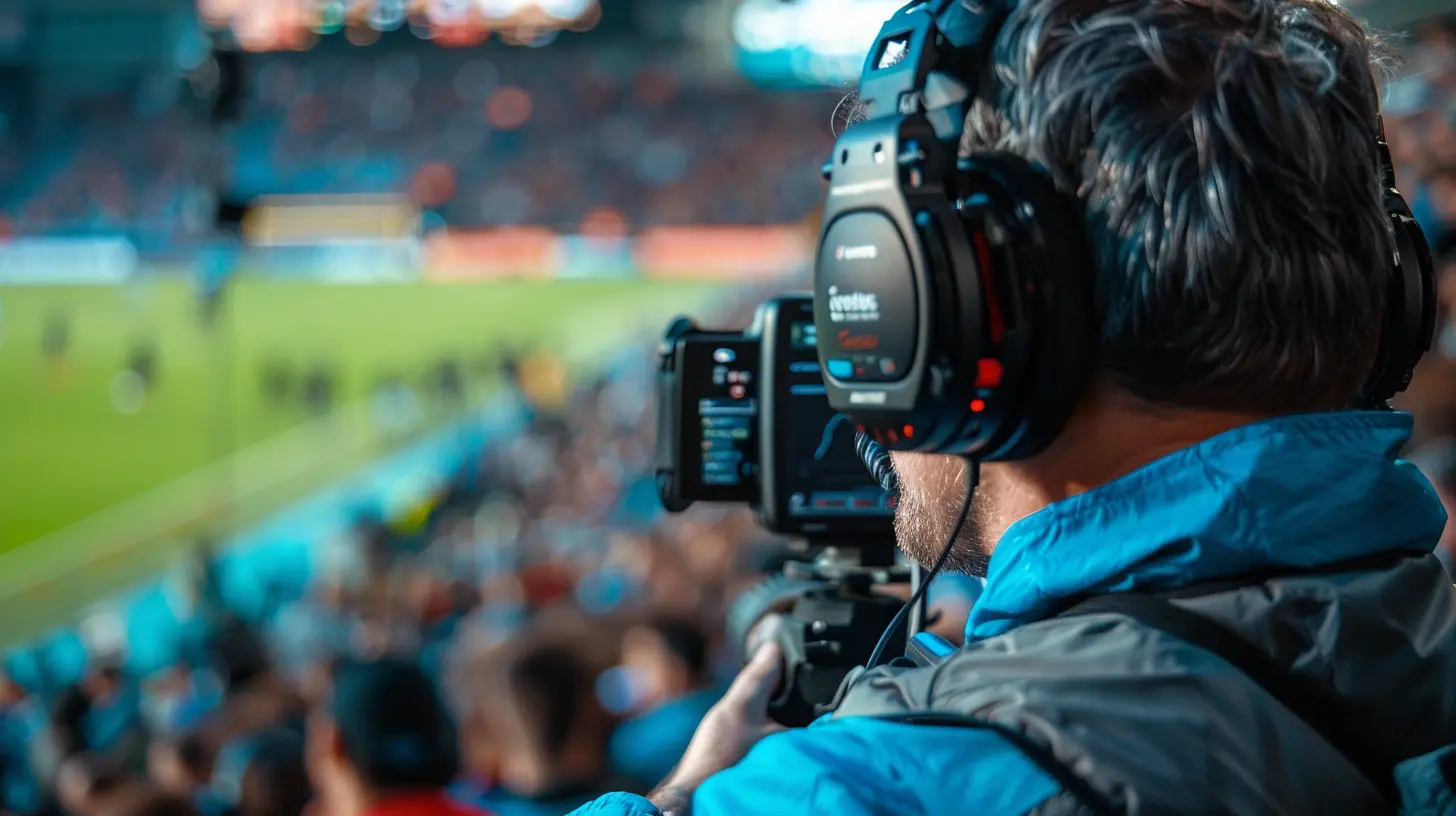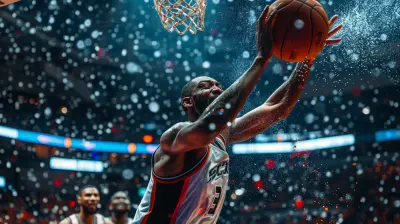How Sports Broadcasters Handle Controversial Calls and Decisions
28 June 2025
When you're watching a heated sports match, there’s nothing quite like the thrill of a hard-fought game. The crowd is roaring, adrenaline is pumping, and players are giving their all. But then, it happens... a controversial call. The referee blows the whistle, and suddenly, everyone’s up in arms. Fans, players, and coaches are on fire with emotion. And let’s be honest, we've all been there, yelling at our TVs, certain that the ref made the wrong call. But have you ever stopped to think about the broadcasters? The ones who have to stay calm, explain what just happened, and avoid throwing more fuel on the fire?
How do sports broadcasters handle controversial calls and decisions? That's what we're diving into today. It’s not as easy as it looks, and believe me, they’ve got a tough job balancing between being informative, neutral, and, above all, professional. Let’s break it down.

The Role of the Broadcaster in Sports
Before we can understand how broadcasters handle controversial calls, let’s take a quick look at what their job entails. Sports broadcasters are responsible for conveying the play-by-play action and providing expert analysis. They set the tone for how the audience experiences the game. Their commentary shapes the way fans perceive the events unfolding on the field. They’re like tour guides, steering the conversation, and helping us make sense of what’s happening.But here’s the kicker: sports broadcasters are supposed to be neutral. They can’t pick sides (even if they have a favorite team), and they have to maintain professionalism even when things get heated. This balancing act can be especially challenging when a controversial call or decision is made.

The Nature of Controversial Calls
Every sports fan knows that not every decision on the field is black and white. Football, basketball, soccer, baseball—it doesn’t matter the sport—controversial calls can come out of nowhere. It could be a missed foul, an offside decision, a questionable strike zone, or a video review that leaves everyone scratching their heads. These decisions can change the course of a game, and sometimes, they can be downright infuriating.Here’s where things get interesting. When a controversial call happens, broadcasters are in the hot seat. They need to walk a fine line between explaining what just happened and not pouring gasoline on an already fiery situation.

Keeping It Neutral: The Broadcaster's Dilemma
So, what’s the first thing a broadcaster has to think about when a controversial call is made? Neutrality. That’s right. As much as they might want to scream, "Are you kidding me?!" like the rest of us, they have to stay cool, calm, and collected.Why Neutrality Matters
Fans tuning in to the game are often emotionally invested. If a broadcaster starts throwing around biased opinions, it can escalate the tension. Controversial calls often divide fans, with half agreeing with the decision and the other half in disbelief. If the broadcaster takes a side, it can alienate part of the audience.Instead, broadcasters aim to provide context and insight. They explain the rules, break down the play, and try to give the audience a clearer understanding of why the decision was made. Think of them as referees for the conversation—keeping emotions in check while providing clarity.

Explaining the Call: Breaking Down the Decision
One of the broadcaster’s key responsibilities during controversial moments is to explain why the call was made. This is where their knowledge of the game and its rules comes into play.Instant Replays and Technology
Instant replays, slow-motion shots, and video reviews are the bread and butter of modern sports broadcasting. When a call is controversial, broadcasters often rely on these tools to offer a clearer analysis. They’ll walk viewers through the play, pausing at key moments to show what the officials might have seen.For example, in a soccer match, if a player is flagged for offside, a broadcaster might use a freeze-frame to show when the ball was passed and where the player was positioned. By breaking it down step-by-step, they help fans understand why the decision was made, even if they don’t agree with it.
Bringing in the Rulebook
Sometimes, it’s all about the rules. In sports like American football or rugby, the rulebook is dense, and not every fan knows every little detail. Broadcasters often step in to explain the more obscure rules that might have led to a controversial call.For instance, in the NFL, the "catch rule" has been a subject of debate for years. What constitutes a completed catch? Sometimes, it feels like only the officials know! In moments like these, broadcasters will often pull from their knowledge of the rulebook to explain why a catch was ruled incomplete, even if it looked like a catch to the naked eye.
Managing Fan Reactions: Walking the Tightrope
Here’s another challenge: managing fan reactions. Sports fans are passionate, and when a call doesn’t go their way, they can get pretty heated. Broadcasters know this, and they have to be careful not to feed into the anger.Avoiding Emotional Language
Broadcasters have to be mindful of the language they use. Emotional words like "terrible," "unbelievable," or "unfair" can stir up even more frustration. Instead, they’ll opt for more measured language like "controversial," "close," or "debatable." This helps to keep the conversation focused on the facts rather than opinions.Engaging Expert Analysts
Many broadcasts feature expert analysts—former players or coaches—who can offer their perspective on controversial calls. These analysts bring a depth of knowledge and experience to the table, which can help diffuse tension. They’ll often provide a more nuanced take on the situation, explaining the complexity of the decision and why it might not be as clear-cut as it seems to fans.This expert input can be invaluable in situations where the audience is divided. By bringing in multiple viewpoints, broadcasters can create a more balanced discussion, helping to calm the nerves of frustrated fans.
The Importance of Apologizing and Admitting Mistakes
Now, let’s talk about when broadcasters get it wrong. Look, nobody’s perfect. Broadcasters are human, and sometimes they might misinterpret a call or jump to conclusions too quickly. When this happens, the best broadcasters are quick to admit their mistakes.Owning Up to Errors
One of the most effective ways broadcasters handle these situations is by admitting when they’ve made an error. If they initially criticize a call, but further replays or explanations prove the officials right, they’ll usually apologize and correct themselves. This kind of honesty and transparency builds trust with the audience. It shows that they’re committed to getting the facts right, even if it means admitting they were wrong.Handling Fan Interaction on Social Media
In today's digital age, broadcasters aren’t just talking to fans through TV screens. They’re also engaging with them on social media platforms like Twitter, Instagram, and Facebook. And let’s be real, social media can be a minefield after a controversial call.Staying Calm in the Face of Criticism
When controversial calls happen, broadcasters often find themselves facing a barrage of comments from fans, some supportive, but many critical. The best broadcasters know how to keep their cool in these situations. They engage with fans, but always in a professional and respectful manner. They might even use humor to defuse the situation or share additional insights that weren’t covered during the broadcast.Providing Additional Context
Social media also gives broadcasters the opportunity to provide more context after the fact. They can share additional analysis, post video clips, or offer their own reflections on the game. This helps to keep the conversation going in a productive way, even after the broadcast has ended.Conclusion: A Balancing Act of Neutrality, Knowledge, and Diplomacy
At the end of the day, handling controversial calls and decisions is one of the toughest parts of a sports broadcaster’s job. They have to stay neutral, provide clear explanations, manage fan reactions, and keep their cool, all while millions of eyes are watching (and judging!).It’s a delicate balancing act that requires a deep understanding of the game, excellent communication skills, and a whole lot of patience. So, the next time you find yourself frustrated by a controversial call, take a moment to appreciate the broadcasters who are trying to make sense of it all and keep everyone informed—without losing their cool!
all images in this post were generated using AI tools
Category:
Sports BroadcastingAuthor:

Frankie Bailey
Discussion
rate this article
1 comments
Mitchell Pratt
This article provides valuable insights into the tough balancing act sports broadcasters face when discussing controversial calls. Their ability to navigate criticism while maintaining credibility is crucial. It highlights the importance of transparency and fairness in fostering trust among viewers during heated moments in sports.
July 9, 2025 at 12:00 PM

Frankie Bailey
Thank you for your thoughts! I completely agree that transparency and fairness are essential for broadcasters to maintain viewer trust, especially during contentious moments in sports.


